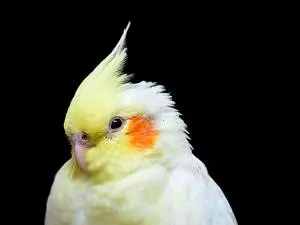
Cockatiels are active and curious birds, and sometimes all this activity can cause the bird to injure itself, these birds can injure themselves anywhere including on their beaks.
This article is a look into everything you need to know when it comes to cockatiels bruising their beaks
Table of Contents
Cockatiel bruised beak:
Bruises may be minor and they usually go away on their own but knowing why these develop and what to do with a bird that has a bruised beak is important. Here is what you need to know about this:
Cockatiel bruises:
One would think that a bird’s beak is a solid structure with no blood vessels but your cockatiel’s beak does in fact contain blood vessels, and because beaks contain blood vessels, they can bruise.
Bird beaks are made up of bone, keratin, and a layer between these two materials that consists of tiny blood vessels called capillaries.
The blood vessels in the bird’s beak transport blood which deliver nutrients throughout the bird’s beak, if the bird injures its beak when it flies into something or hits its beak against something then the bird’s beak can become bruised.
Bruises develop when the blood vessel under the bird’s beak break and cause blood to leak out into the beak. If the injury did not puncture the keratin of the beak then the bird’s beak will not bleed externally and will only bleed internally
The bruise on your bird’s beak can show up as a black, blue, brown, or grey patch depending on the color of your bird’s beak
What to do:
Bruising on your bird’s beak is fairly common and isn’t usually something to worry about.
Because the bird’s beak is constantly growing the bruise will not fade away as it would on skin but will rather be pushed along to the tip of the bird’s beak as the keratin grows. The bird will then grind this part of its beak away through its daily activities.
If left alone the bird’s beak will be fine but there are some things you can do to help the bruise along.
You can start off by cleaning the bird’s beak if there is any dirt on the beak. Do this very gently, the layer of nerves and capillaries enable the bird to feel pain at its beak so if you are too harsh when doing this then the bird will experience a lot of pain.
You can ice the bird’s beak to help reduce the pain caused by the injury.
Make sure that you offer the bird foods that are easy to eat during its healing. Giving the bird foods that aren’t easy to eat can cause the bird to experience pain when eating.
Try to give your pet soft foods like a warm mash or slurry during this time.
The bird is likely feeling stressed as a result of sustaining the injury, you can help relieve stress by giving the bird electrolytes.
If the bird starts showing signs of distress then you may want to consider taking your bird to the vet.
If you enjoyed this article then you may also be interested in other bird related articles. Here are some articles that you may be interested in: Cockatiel Beak Peeling, Budgie Puberty, Why Is My Canary Sitting In His Food Dish?, Parakeet Laid Eggs In Food Bowl, Budgie Squeaking When Sleeping, Angry Budgie Sounds, Budgie Flapping Wings In Cage

